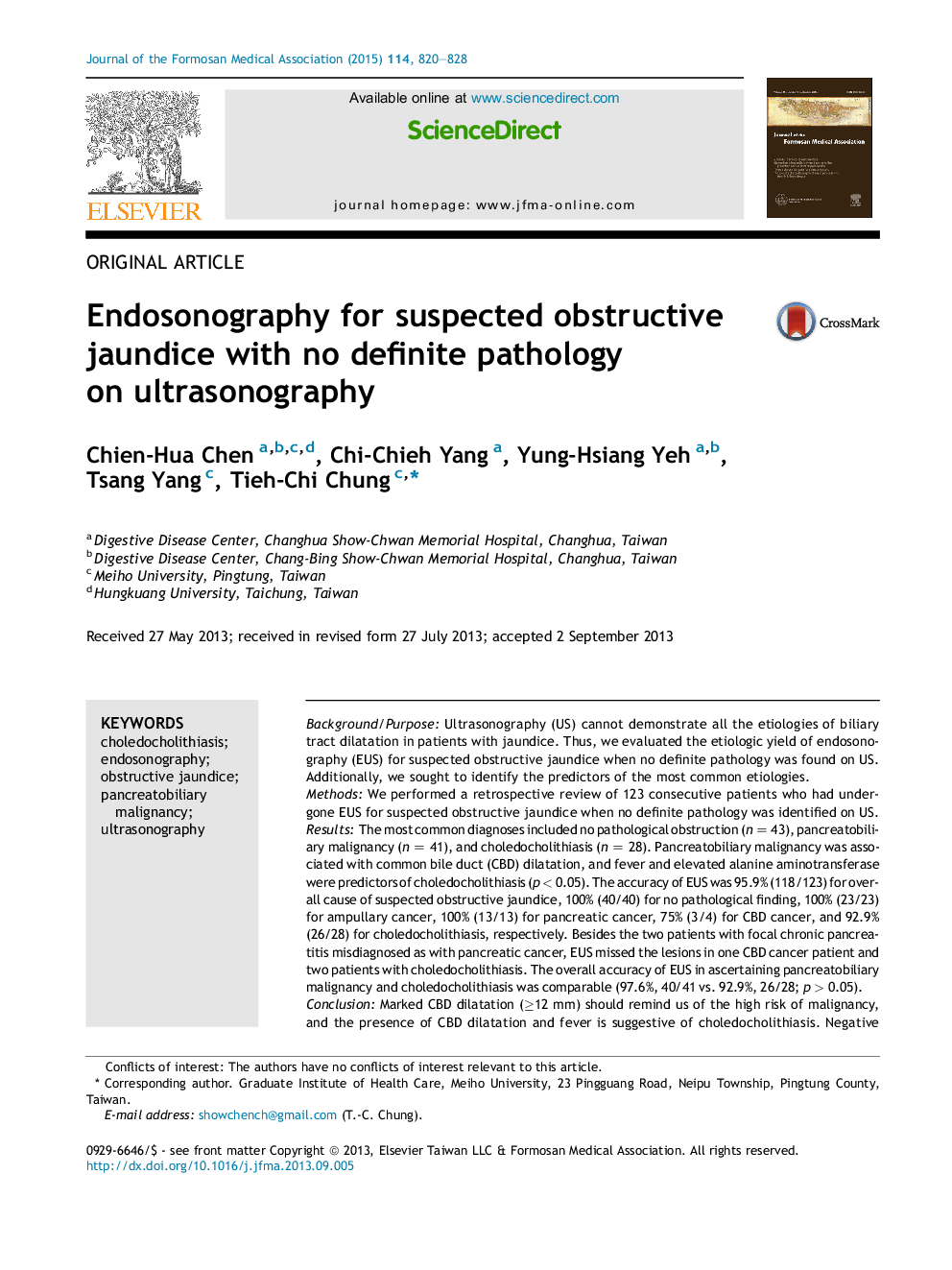| کد مقاله | کد نشریه | سال انتشار | مقاله انگلیسی | نسخه تمام متن |
|---|---|---|---|---|
| 3478445 | 1233400 | 2015 | 9 صفحه PDF | دانلود رایگان |
Background/PurposeUltrasonography (US) cannot demonstrate all the etiologies of biliary tract dilatation in patients with jaundice. Thus, we evaluated the etiologic yield of endosonography (EUS) for suspected obstructive jaundice when no definite pathology was found on US. Additionally, we sought to identify the predictors of the most common etiologies.MethodsWe performed a retrospective review of 123 consecutive patients who had undergone EUS for suspected obstructive jaundice when no definite pathology was identified on US.ResultsThe most common diagnoses included no pathological obstruction (n = 43), pancreatobiliary malignancy (n = 41), and choledocholithiasis (n = 28). Pancreatobiliary malignancy was associated with common bile duct (CBD) dilatation, and fever and elevated alanine aminotransferase were predictors of choledocholithiasis (p < 0.05). The accuracy of EUS was 95.9% (118/123) for overall cause of suspected obstructive jaundice, 100% (40/40) for no pathological finding, 100% (23/23) for ampullary cancer, 100% (13/13) for pancreatic cancer, 75% (3/4) for CBD cancer, and 92.9% (26/28) for choledocholithiasis, respectively. Besides the two patients with focal chronic pancreatitis misdiagnosed as with pancreatic cancer, EUS missed the lesions in one CBD cancer patient and two patients with choledocholithiasis. The overall accuracy of EUS in ascertaining pancreatobiliary malignancy and choledocholithiasis was comparable (97.6%, 40/41 vs. 92.9%, 26/28; p > 0.05).ConclusionMarked CBD dilatation (≥12 mm) should remind us of the high risk of malignancy, and the presence of CBD dilatation and fever is suggestive of choledocholithiasis. Negative EUS findings cannot assure any pathological obstruction in patients with clinically suspected obstructive jaundice.
Journal: Journal of the Formosan Medical Association - Volume 114, Issue 9, September 2015, Pages 820–828
